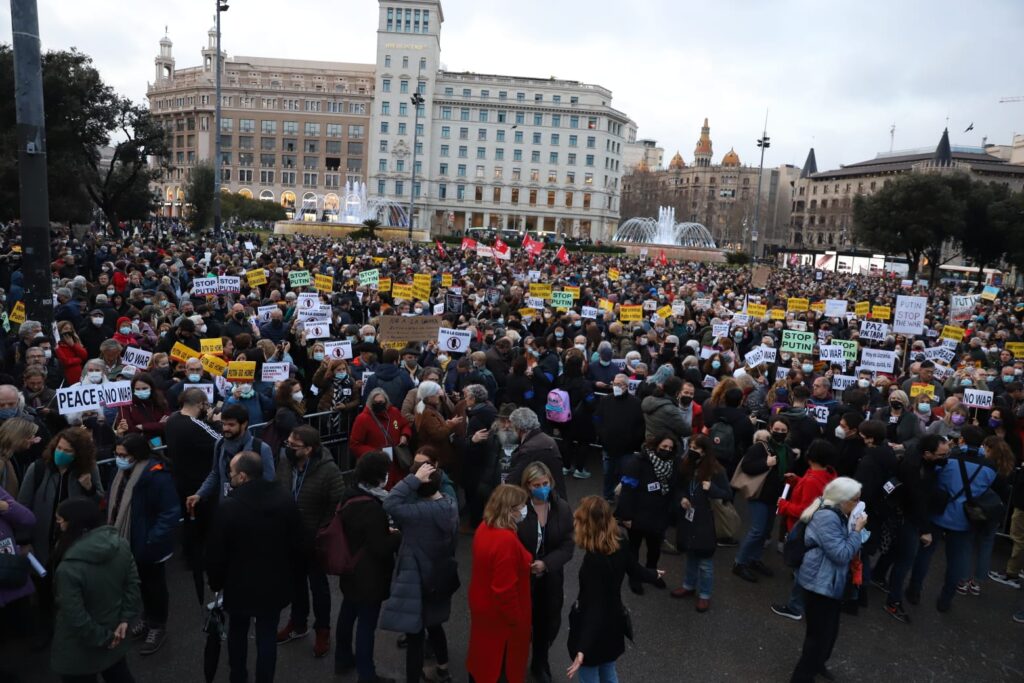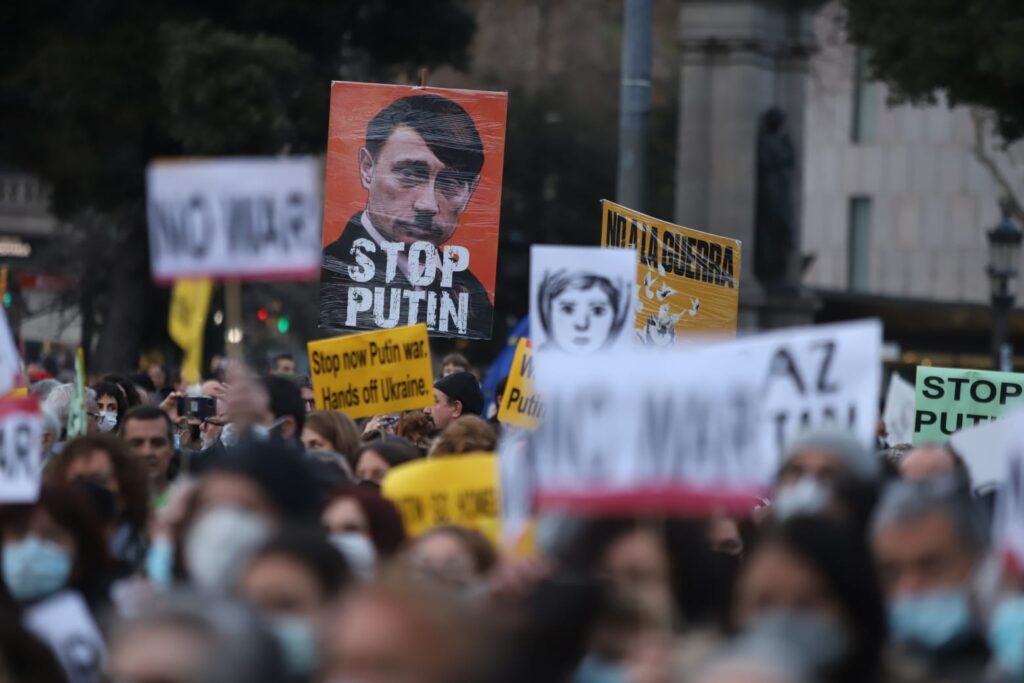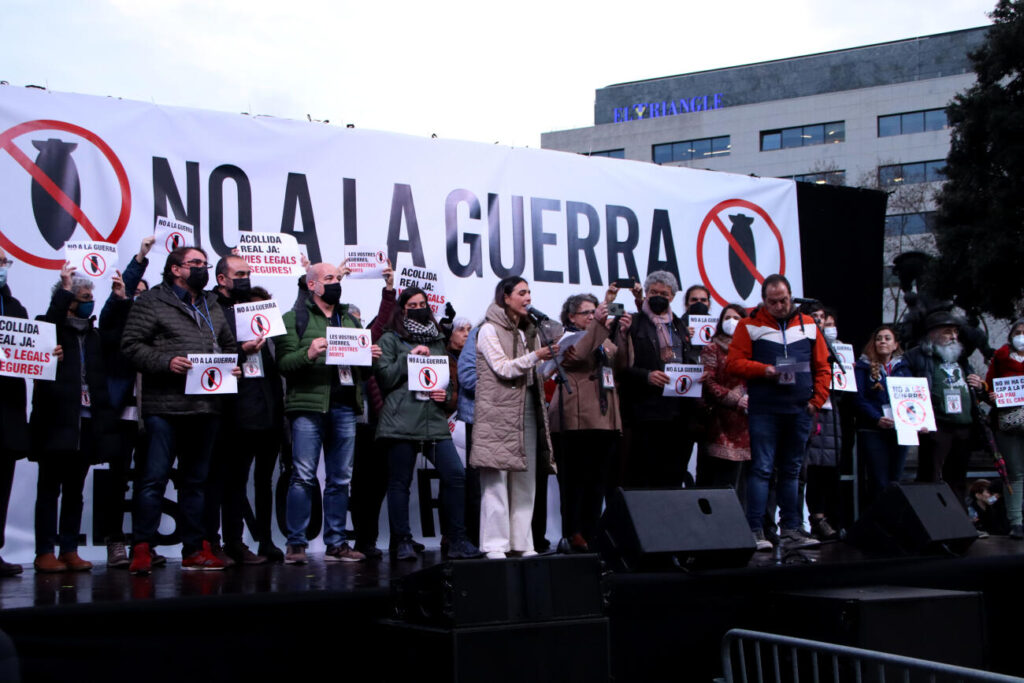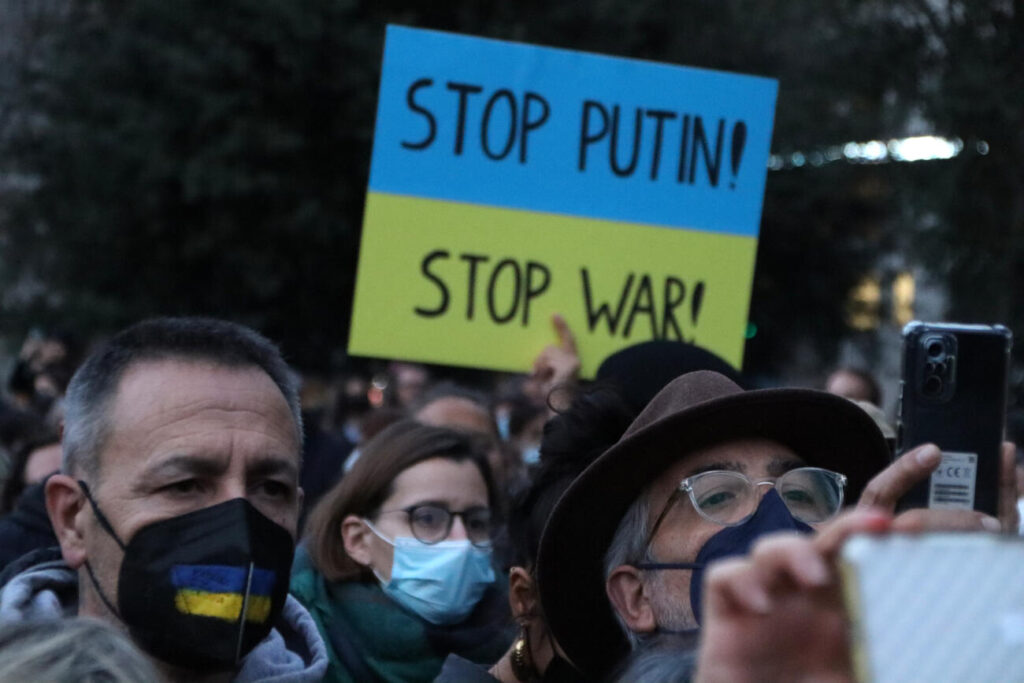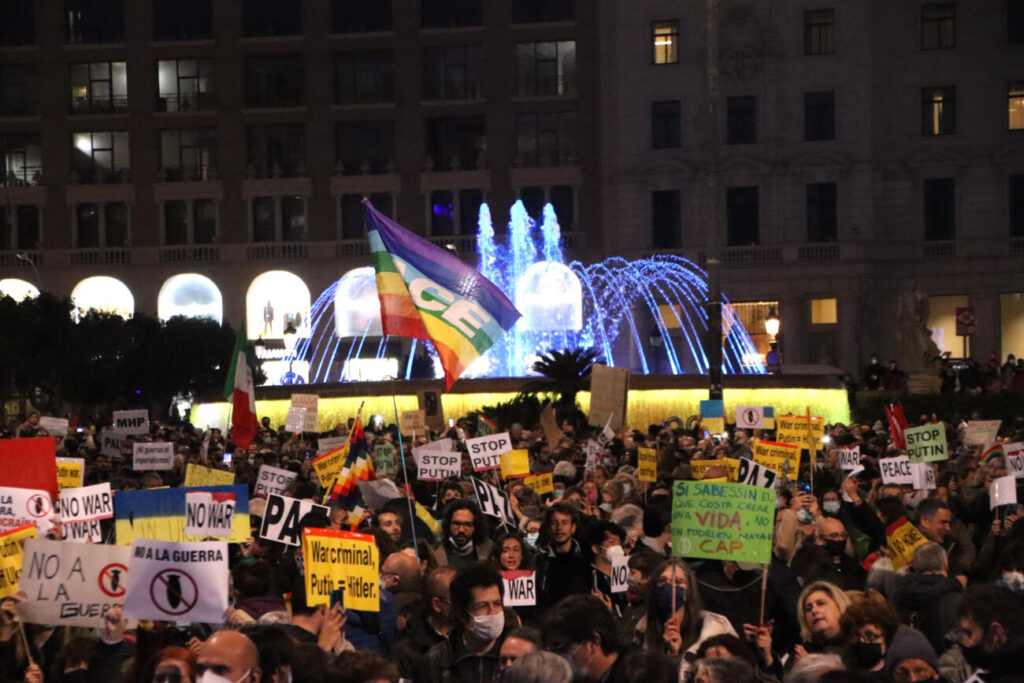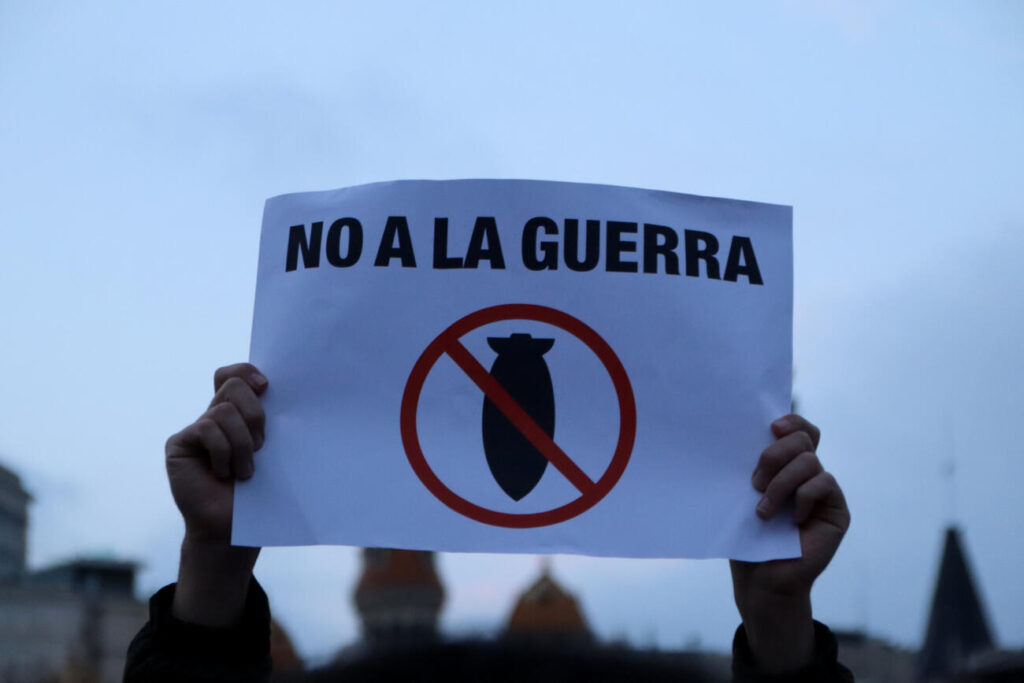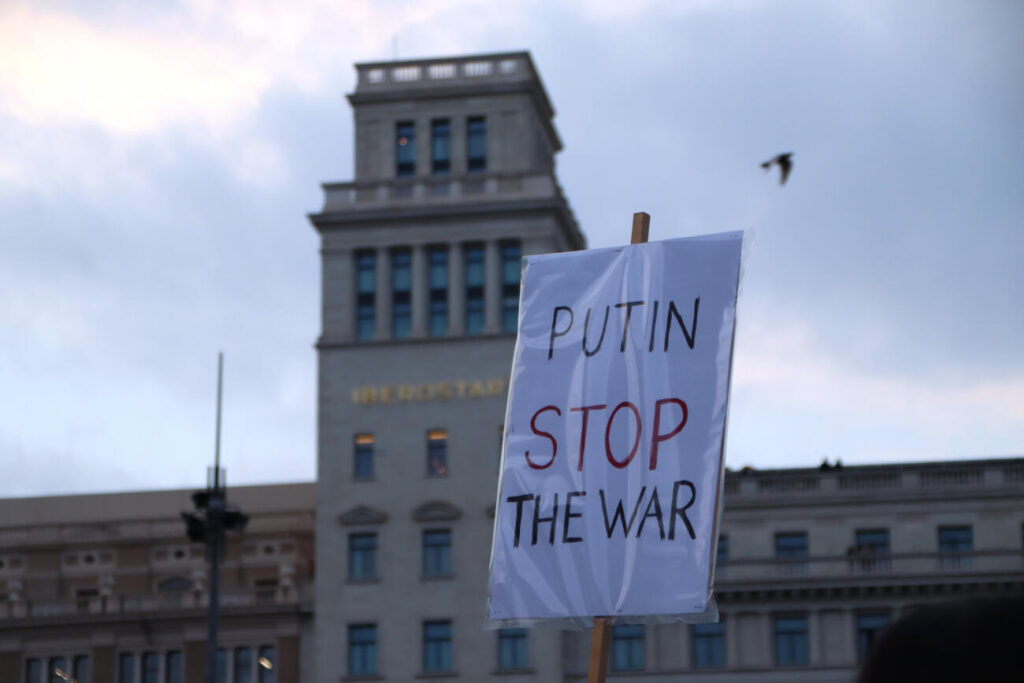02.03.2022 - 20:09
|
Actualització: 13.06.2022 - 10:14
The impact of the Ukraine conflict is still present in Barcelona with protests in support of the invaded country on a daily basis. On Wednesday afternoon, Ukrainians gathered again for the seventh day in a row, while at the same time, anti-war demonstrators met at Plaça de Catalunya square. In total, there were up to 3.500 people according to Barcelona local police.
Both protests had a similar goal, to stop the war in Ukraine, but they had different approaches. The Catalan anti-war platform Stop the War, with several hundreds of people, called for the conflict to end. The Ukrainian protesters, on the other hand, reminded Europe that “nobody wants war, but let’s not forget that families cannot be defended from tanks with words,” according to their manifesto.
The two demonstrations started in two different locations. Several dozen Ukrainians first went to Plaça de Sant Jaume, between the Catalan government headquarters and Barcelona City Hall. Later in the evening, however, they decided to join forces with the Stop the War protest in Plaça de Catalunya square. At this second protest, which started at 6:30pm, there were hundreds of people chanting “No a la Guerra” (no to war) and the square fountains were illuminated with the colors of the Ukrainian flag.
NATO’s responsibility
In a statement released on Tuesday the anti-war group urged all parties to “reduce the militarization of the Ukrainian conflict to avoid war,” a sentiment not totally aligned with the crowds protesting in Barcelona over the past few days, some of whom have been chanting for “military support for Ukraine now.”
Stop the War say that Western Europe and NATO’s responsibility in Ukraine is “not minor, having helped pro-Western Ukrainian politicians and contributed to the militarization of the country and the region, in the same way as Russia is responsible for its totally unacceptable military actions to gain control of the Ukrainian regions where pro-Russian communities exist, mainly in Crimea and the eastern part of Donbas (Luhansk and Donetsk).”
